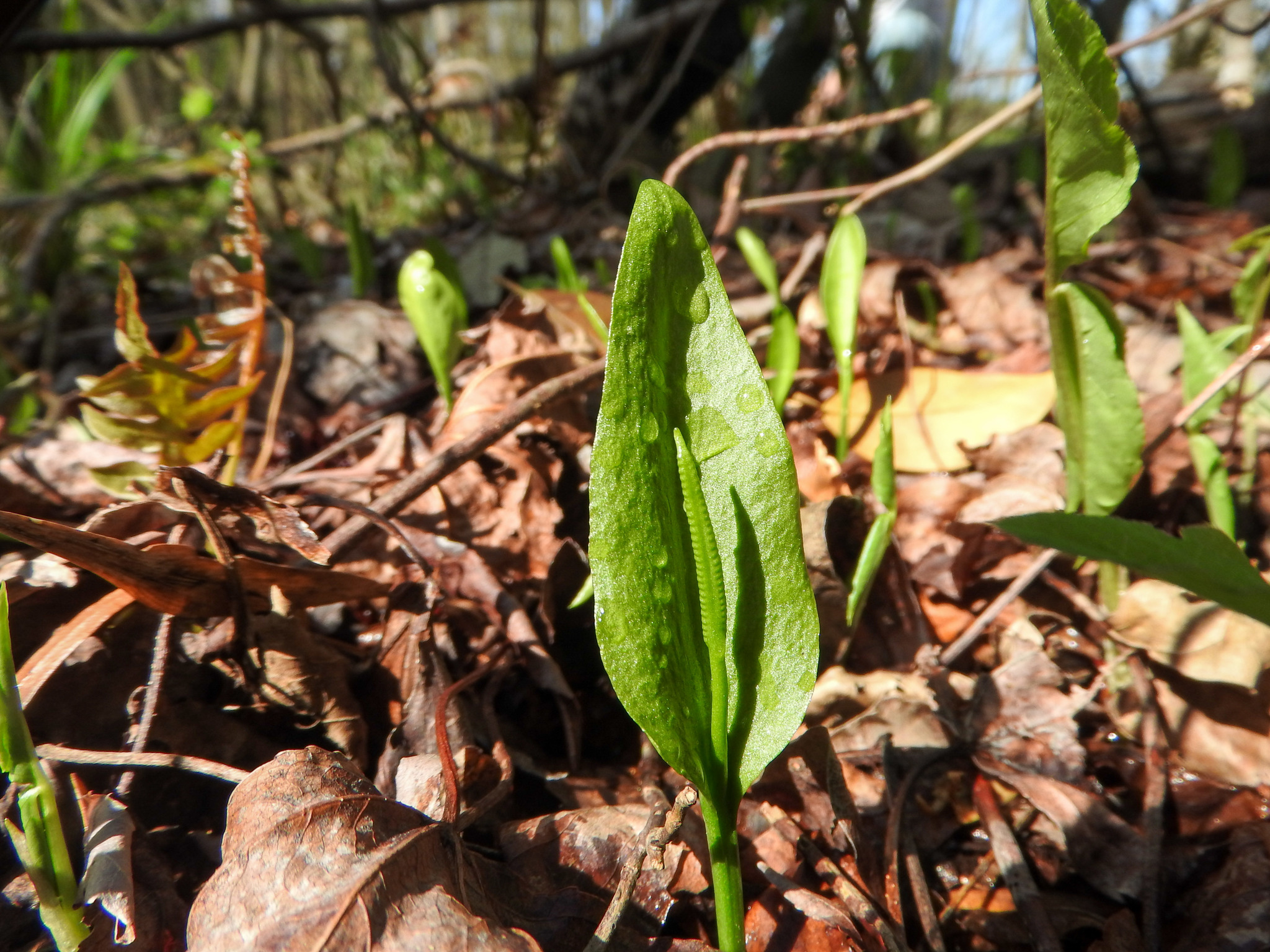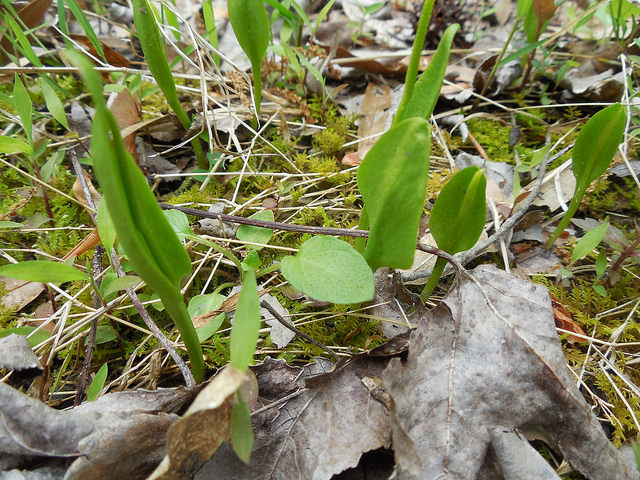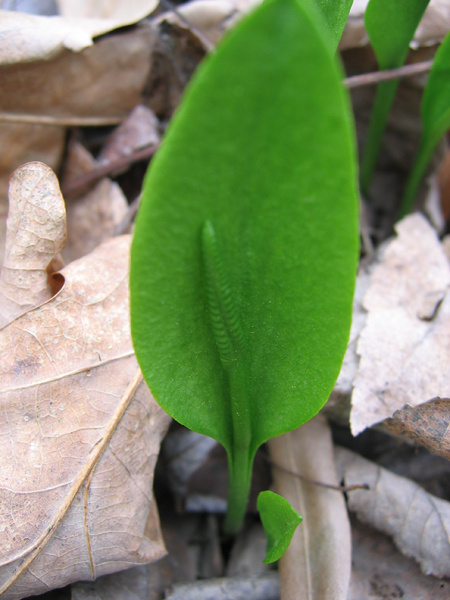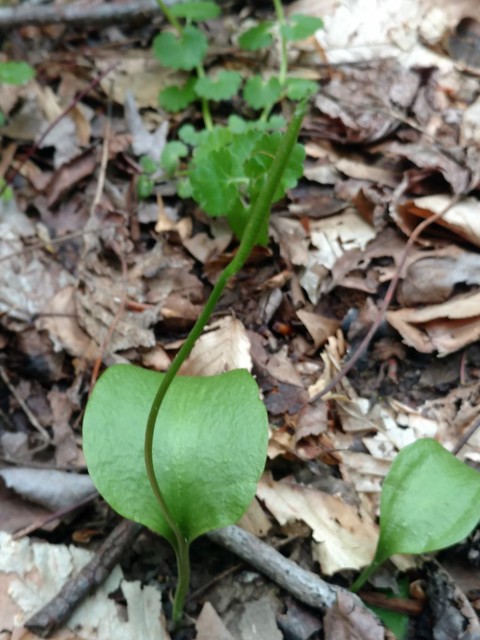Map Snapshot

















80 Records
Status
Most sources treat this species (Southern Adder’s-Tongue) in North America as a synonym of the European Ophioglossum vulgatum. However, Weakley (2020, Flora Southeastern US) prefers the name Ophioglossum pycnostichum. Hopefully future studies of this species will uncover the relationship between North American and European populations.
Seasonality Snapshot
Source: Wikipedia
| Ophioglossum vulgatum | |
|---|---|

| |
| Scientific classification | |
| Kingdom: | Plantae |
| Clade: | Tracheophytes |
| Division: | Polypodiophyta |
| Class: | Polypodiopsida |
| Order: | Ophioglossales |
| Family: | Ophioglossaceae |
| Genus: | Ophioglossum |
| Species: | O. vulgatum
|
| Binomial name | |
| Ophioglossum vulgatum | |
Ophioglossum vulgatum, commonly known as adder's-tongue,[1] southern adder's-tongue or adder's-tongue fern, is a species of fern in the family Ophioglossaceae.[2]
The chloroplast genome was reported to have a size of 138,562 base pairs.[3]
Description
[edit]Ophioglossum vulgatum grows from a rhizome base to 10–20 cm tall (rarely to 30 cm).[citation needed] It consists of a two-part frond, separated into a 4-12 cm rounded diamond-shaped leaf sheath and narrow branchless spore-bearing spike.[4] The spike has around 10-40 segments on each side.[citation needed]
It reproduces by means of spores.[4]
Taxonomy
[edit]Linnaeus described adder's-tongue with the binomial Ophioglossum vulgatum in his Species Plantarum of 1753.[5]
Distribution
[edit]It is native to many regions with a wide scattered distribution: throughout temperate through tropical Africa and throughout the temperate Northern Hemisphere in Europe, northeastern North America, temperate Asia, and Eurasia.[2][6]

Habitat
[edit]This small, hard-to-spot plant can occur singly in unimproved pastures, rock crevices and grassy path-sides, but also can occur in colonies of hundreds of plants in sand dunes.[citation needed]
In Finland, unlike elsewhere, it grows on seashores, unlike other parts of the world where it tends to be a calciphile. Finland has fitting lime rich soil habitat sparsely, but the plant has found an equivalent living habitat from Finland's seashores affected by a post-glacial rebound: land just risen from the sea is often quite neutral and cointains mineral salts in addition to being open and bare enough.[4]
Rarity
[edit]This species is rare in most European countries. In Ukraine, there were recorded 280 loci: 152 before 1980, after 1980 – 120, as before and after 1980 – 8 locations.[7]
Uses
[edit]Traditional European folk use of leaves and rhizomes as a poultice for wounds. This remedy was sometimes called the "Green Oil of Charity". A tea made from the leaves was used as a traditional European folk remedy for internal bleeding and vomiting.[8]
References
[edit]- ^ Stace, Clive (2010b), New Flora of the British Isles (3rd ed.), Cambridge, UK: Cambridge University Press, ISBN 978-0-521-70772-5, p. 9
- ^ a b "Ophioglossum vulgatum". Germplasm Resources Information Network. Agricultural Research Service, United States Department of Agriculture. Retrieved 2014-02-14.
- ^ Hao, J., Liang, Y., Zhu, M., Ping, J., Feng, P., Su, Y., & Wang, T. (2021). The complete chloroplast genome of Ophioglossum vulgatum L.(Ophioglossaceae) and phylogenetic analysis. Mitochondrial DNA Part B, 6(9), 2730-2731.
- ^ a b c Piirainen, Mikko; Piirainen, Pirkko; Vainio, Hannele (1999). Kotimaan luonnonkasvit [Native wild plants] (in Finnish). Porvoo, Finland: WSOY. p. 26. ISBN 951-0-23001-4.
- ^ Linnaeus, C. (1753). Species Plantarum. Vol. II (1st ed.). Stockholm: Laurentii Salvii. p. 1062.
- ^ USDA
- ^ Parnikoza I., Celka Z. An Archive of the Ophiglossaceae in Ukraine
- ^ "Dr. Duke's Phytochemical and Ethnobotanical Databases at NAL". 2023-02-03. Archived from the original on 2023-02-03. Retrieved 2024-04-17.
6. [1]











